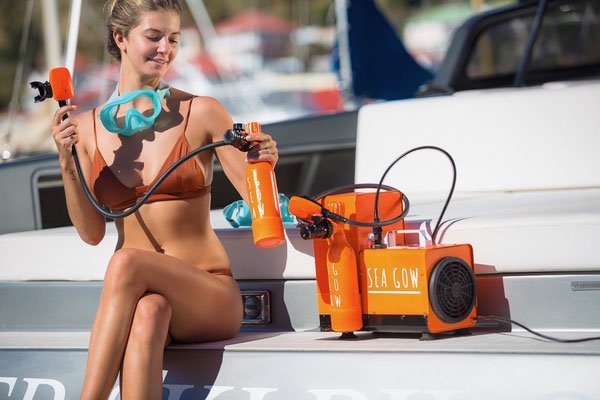
The Seagow mini underwater breathing system – good idea or not? A quick review of this new underwater breathing system
I came across the Seagow and had to write a quick article on this product. I’m really worried that non-scuba divers are going to buy one of these mini underwater breathing systems. They will do so not knowing about the risks they are taking. Please read on…
WARNING: Only use the Seagow underwater breathing system (Including the MiniDive Pro and other similar products) if you are a certified scuba diver. DO NOT buy it or use it otherwise. Although the Seagow and MiniDive both come with instructions, this is not sufficient for your own personal safety.
You should only learn to dive with a leading scuba diving organisation like BSAC, PADI, NAUI or SSI first. Note that scuba diving is a dangerous sport. It becomes even more dangerous if done when not certified!
The best way to do more diving is to book yourself on a scuba diving liveaboard. You can check the latest and best deals on liveaboards using the following window:
Is the Seagow safe?
An upfront review of the Seagow. Firstly, I’ve used one myself and not had the chance to see it up close and personal. I don’t know anything about its quality or underwater performance. But my concern is not directly with the product itself. Instead it’s about who will buy them. The same goes for the MiniDive Pro (see below).
NOTE: Only certified scuba divers should use of the Seagow and similar products. Anyone who’s not had relevant scuba diver training with any of the leading scuba diving organisations should not use the Seagow or similar equipment.
This review of the Seagow is not about the safety or quality of the product itself. But is about the safe use of it. Use of the Seagow should only be by qualified scuba divers. Plus you should only ever scuba dive in buddy pairs too.
The fact that this underwater breathing system is limited to 3 metres (10 feet) and to just 15 minutes, does not negate the safe diving practice of scuba diving in buddy pairs. A pulmonary barotrauma or arterial gas embolism can occur in an ascent of just one metre (3 feet).
Or any of the other safe scuba diving practices for that matter either!
Who is the Seagow for – Scuba divers or snorkelers?
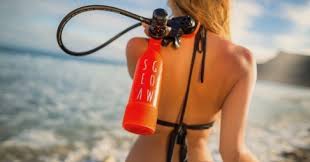
I wonder who would use this product. I doubt whether experienced or certified scuba divers would use it. Snorkelers may use it, but if they’ve not been properly trained to scuba dive this is my biggest concern.
Their website states the following: “Simple to use for all.” It’s the ‘all’ concept that I have a problem with. Scuba diving is an ‘all inclusive sport,’ which means it’s for most ages and abilities.
But Scuba diving is not for all, when it comes to those who haven’t been properly trained or been certified to scuba dive.
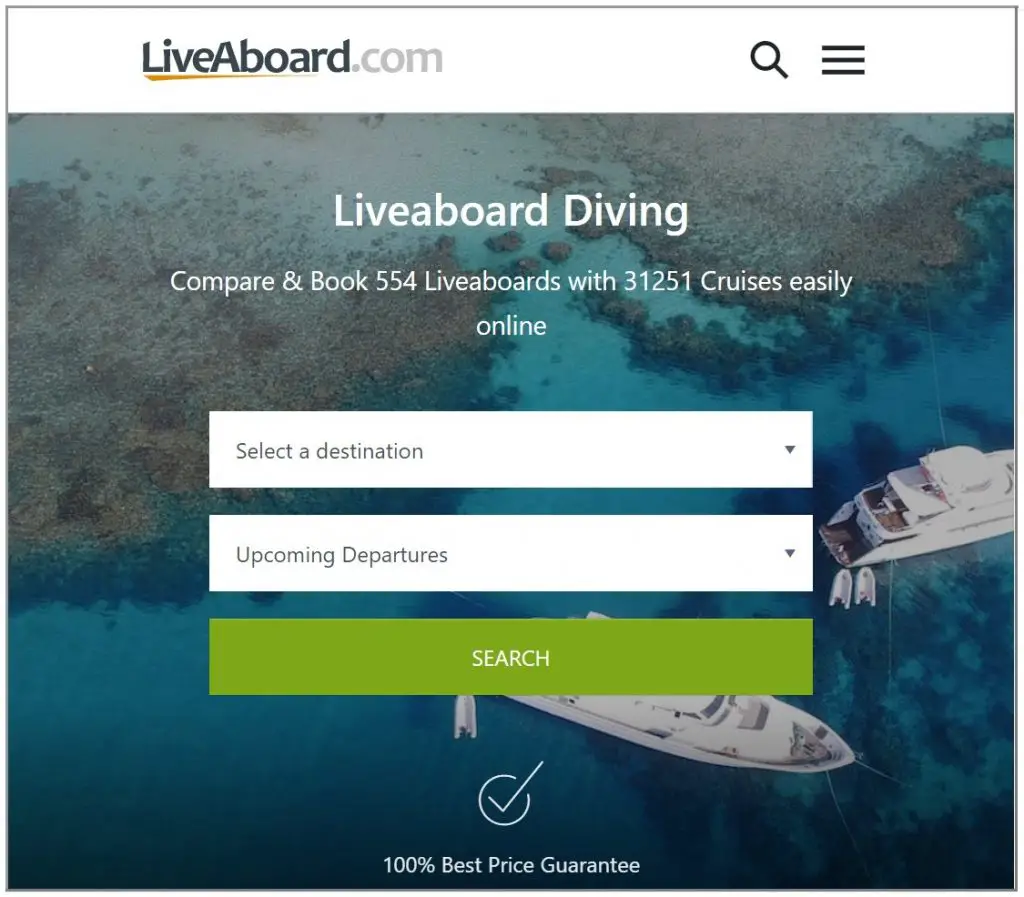
The Seagow is a great idea but only in the right hands…
If you’ve landed on my scuba diving blog because you’re reviewing the Seagow or similar underwater breathing system product for yourself, please read what I have to say carefully and take heed of my advice. Don’t get me wrong, I love innovation and the concept is great. I don’t want to be the one that spoils the party.
However, please understand my concerns. Diving can be dangerous. Entering the underwater world must be done with respect and with an understanding of the dangers involved.
Scuba diving is not a government regulated sport as such, which means it’s not illegal to dive without certification.
It’s extremely easy to buy scuba diving equipment already, without the relevant certificates. I worry that these mini underwater breathing systems make this even easier.
That’s where my biggest worry lies, as there are many people who search on the internet ‘How to scuba dive without certification.’ The implication being that those who search for this are prepared to risk their lives.
Scuba diving is classed as a dangerous sport. But with the correct training, any risks associated with diving underwater are minimised. However, anyone who purchases a Seagow (or similar) and goes diving without prior instruction, are putting themselves and their lives at risk.
Risk of tank deterioration of the Seagow or similar
The one part of scuba diving that is regulated in most countries, in particular the UK and America, is the filling of dive tanks with compressed air. Mini dive tanks like the Seagow and MiniDive Pro come with their own air compressor.
To have your own dive tanks filled at a dive shop, the air tanks have to be ‘in-date.’ To be ‘in-date’ they need to have regular periodic checks every so many years.
This ensures the integrity of the air tanks themselves. This is for safety reasons, as when you are dealing with high pressure systems, this can be dangerous in the wrong hands.
Actually, even in the right hands things can go wrong. If the end of a dive tank explodes, this will be like a bullet. It will kill anyone in its path if they are hit in the wrong place.
More Reading: What are scuba tanks made out of (Steel vs aluminium scuba tanks)
Air tank corrosion or loss of integrity…
An old air tank which has corroded in some way or where small fractures have occurred, may explode. The air tank tests ensure this is unlikely to happen. No air tank filling station will fill a dive tank with compressed air if the tank is out of date.
However, with the Seagow and the MiniDive Pro they are filled using their own mini compressor. There are no requirements for testing of the compressor itself. Plus there are no requirements for the mini tank’s integrity to be checked either.
This is another major concern over the long term. Will people who buy these mini scuba diving tanks have their compressors and the mini tanks checked professionally? I doubt it.
Minimum age for scuba diving concern
WARNING: To all parents of children that want a Seagow or a MiniDive Pro or similar. Do not buy one or let your child use one, unless they’ve been suitably trained with a recognised scuba diving organisation.
The minimum age for scuba diving for PADI is 10 and for BSAC is 12. However, in the documentation in the MiniDive Pro, this suggests a minimum age of eight. The same instructions add ‘under adult supervision.’
However, unless the adult is a qualified scuba diver, then this is like the blind leading the blind.
The only way that a child should ever go any where near one of these underwater diving systems is under the guidance of a suitably experienced and certified scuba diver instructor.
If you are a parent reading this, and you value the life of your child, do not buy a mini underwater breathing system like this, without you and your child getting suitably qualified to scuba dive beforehand.
Other concerns regarding the Seagow mini underwater breathing system
The other concerns about this new underwater diving system, includes the maintenance and upkeep of the compressor.
Diving with ‘dirty’ air can cause problems for scuba divers. Having contaminated air in your dive tank can cause minor problems such as headaches. However, these can be worse depending on the type of contamination and the level of the impurity.
Additional problems such as impaired respiratory function from dust, nausea from carbon monoxide or condensed oil and loss of consciousness from carbon monoxide, carbon dioxide and volatile hydrocarbons can all be symptoms of a bad air fill.
The instructions discuss changing filters and the correct use of the mini compressor. However, I worry that these instructions are not safe enough for untrained people to compress air into tanks for use underwater.
With BSAC for example, there’s a whole course on how to use a compressor and how to fill scuba diving tanks…safely.
As already noted, the MiniDive Pro suggests the minimum age to use their underwater diving system is eight. Whilst the documentation states under adult supervision, this does not account for an adult that is also not suitably trained.
There’s nothing to stop them from filling their mini air tank near to the exhaust of a car. Or for them to forget to change the filters.
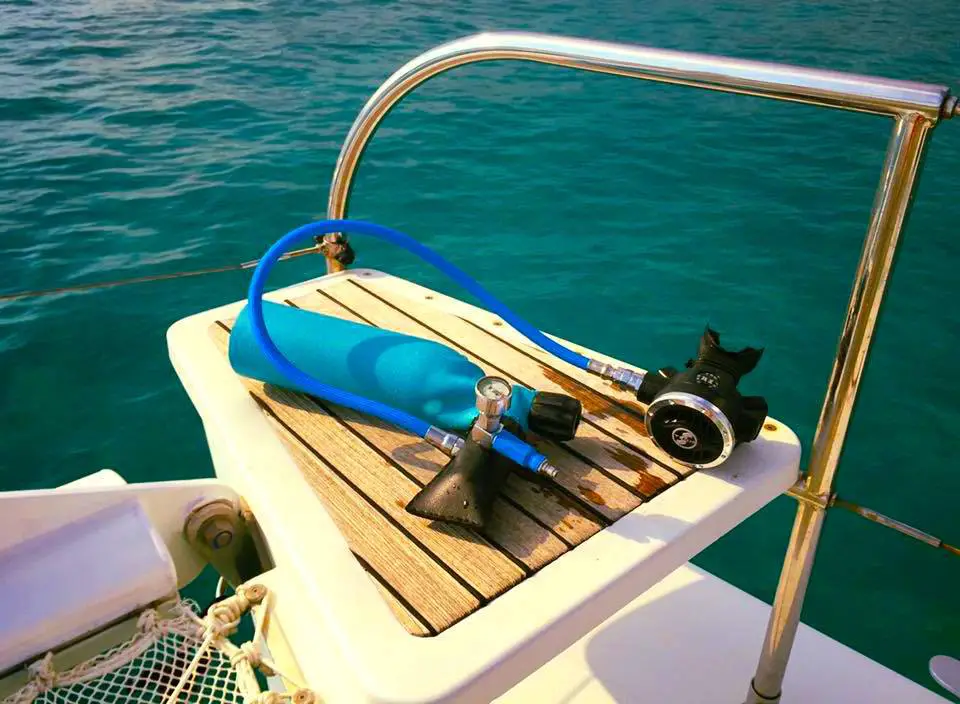
Other products that offer the same mini dive tank – The MiniDive Pro
Similar to the Seagow is the MiniDivePro, which is of French manufacture.
They too state that their underwater breathing system can be used by all. In fact on their website they state “MiniDive is a new mini dive tank designed and tested to be used by all.”
This implies that all swimmers alike may use this scuba diving equipment. So like the Seagow, no prior knowledge, training or understanding of scuba diving is required.
The implication being that you can buy the MiniDive Pro and simply take it to a swimming pool or worse the sea and dive.
The MinDrive Pro has a link to their instructions and documentation. In this manual it gives warnings about how to breath underwater. It warns against holding your breath, which it should, but there’s no warnings about diving alone.
Safe diving practice always advises to dive in buddy pairs. I really worry about both of these products, plus the likelihood of copycat underwater breathing systems.
Final review and conclusion to the Seagow and MiniDive Pro
The concept is great to enable scuba divers (i.e. certified scuba divers) to be able to do short dives and to recompress the dive tank themselves.
However, I don’t feel that this is the Seagow’s, or the MiniDive Pro’s, intended market at all. Reading their marketing material and looking at what they say, this is intended for general use by non-trained or certified scuba divers.
I have only quickly set down my initial concerns and main worries for these scuba diving products. But there may be other concerns too.
But in summary and to recount my advice on the Seagow and similar products:
- Only scuba dive using the Seagow (this includes the MiniDive Pro and other similar products) when you’re a suitably qualified scuba diver.
- Only dive using the mini underwater breathing system in buddy pairs.
- Take additional training to learn and understand about how to use air compressors and the filling of compressed air tanks.
- Have your mini dive tank and the mini air compressor checked professionally on a regular basis.
- Follow all the usual safe diving practices – here are 26 of the top rules for safe scuba diving.
WARNING: Please do not use either the Seagow or the MiniDive Pro or any other derivative of this concept if you’re not already a certified scuba diver.
I really hope that I don’t get to read in the news of anyone who buys a Seagow or similar and has an incident.
The worst news to hear would be of a fatality! Please don’t let that be you and get trained before you purchase one of these mini underwater breathing systems.
Please be safe and not sorry.
I hope you enjoyed this article about a the Seagow underwater breathing system
I’d love to hear from you. Tell us about your adventures of diving and snorkeling, in the comments below. Please also share your photos. Either from your underwater cameras or videos from your waterproof Gopro’s!
If this article hasn’t answered all of your questions. If you have more questions either about snorkeling or scuba diving (or specifically about the Seagow and similar mini underwater breathing systems), please comment below with your questions.
There will also be many more articles about scuba diving (and snorkeling) for you to read and learn about these fabulous sports.
Have fun and be safe!

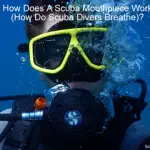

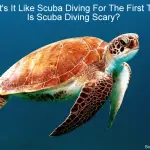

I think I missed the part where the title of the article was actually answered. It sounded more like a rant about how people should get certified. Maybe use a different title if the review is going to start with something like “I have not used the product I’m reviewing”.
Hello Josh and thank you for your comment. I welcome your point about my article. It may come across as a rant, but in fact it is my being concerned that people will go out and buy a Seagow or similar, without first realising that scuba diving is a dangerous sport and think they could use it without first getting certified to dive.
I don’t have a problem with the product itself, in fact I think it’s a great idea for certified scuba divers to use, as it’s extremely portable. I’m not sure whether that point came across in the article. I welcome safe scuba diving products that are aimed at certified scuba divers. But I don’t get the feeling that this is the case for this underwater breathing system. My feeling is that it is aimed at non-certified scuba divers, but perhaps I’ve got that wrong.
I may not have used a Seagow myself, but I do make that clear early in the article. I’ve been scuba diving for nearly 30 years and trained people to scuba dive. I therefore feel that I have ‘authority’ to view my concerns on this product without myself using it. Which is what the article is really about, rather than a review of how good the product is, i.e. either good or bad, it’s about who should use the product instead.
I’d be interested to learn whether you are a certified scuba diver or not. If you’re not, please let me know whether you are still considering buying one of these mini underwater scuba tanks, without first getting certified.
Please reply further with your thoughts and comments. I look forward to hearing from you.
Russel – Just read your piece on these mini tanks. Very important safety warnings for novice divers like me. I just checked the SeaGow kickstarter page and the clowns offering the mini tank haven’t delivered the product which they guaranteed to deliver by June 2018. Which leads me to another very important safety issue: Why would anyone send their money, place their trust and risk their life on an inexperienced guy who clearly doesn’t have the experience or means to produce high quality diving equipment? The entire operation at SeaGow looks like a scam (including the extremely tacky use of young attractive women to sell the product). The organizer of the campaign doesn’t even bother to answer questions in the comment section accept to say “coming soon.”
Hello Peter, thank you for your comment and I’m sorry to hear about your problems you’re having with SeaGow. Can I check that you are a certified scuba diver, as it’s important to only use this type of equipment as a certified scuba diver.
Also, please make sure that if and when you take delivery of your mini dive tank that you only scuba dive with a buddy. Please don’t scuba dive alone.
Can I ask who your got certified with? How long have you been diving for?
These compressors look exactly like the yong heng compressor I use for my pcp air rifle and also for paintball guns. There is no mention on the type of oil that must be used for breathing air along with the proper filtration. These small compressors have a lot of blow by on the pistons and should not be used for breathing air. I feel someone is going to get hurt with this thing. Buyer beware.
Hello James, and thank you for your comments about the compressor. It does worry me that people will use these compressors without the proper training and guidance, which is a requirement for any person in charge of compressed air for filling diver’s air tanks.
I would welcome comments from the manufacturers on the above article or the comments made so far on these products. I’m sure users and/or potential users of the mini dive tanks would also welcome this feedback too.
As I mention in many of my posts on my scuba diving blog, safety is my main concern for scuba divers. Scuba diving is considered a dangerous sport, but most of the ‘danger’ or should I say ‘risk’ comes from those that scuba dive who don’t following best diving practice or the correct protocol.
If you follow safe diving practices, if you receive the correct and proper training and follow what you’re taught, then any risk from scuba diving is minimised.
The same rules apply to these mini underwater breathing systems and their associated compressors and the operators of these compressors…get trained, make sure the equipment is of high quality and safe and then enjoy and have fun scuba diving!